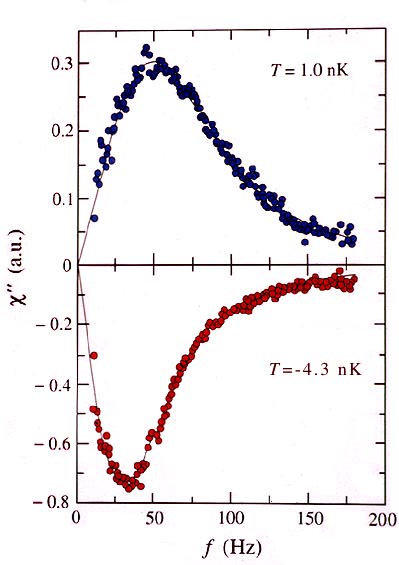
Nuclear spins in silver
provide an interesting model system for an fcc
antiferromagnet. The dominant force is the
Ruderman-Kittel indirect exchange interaction which is
about three times larger than the dipolar contribution.
In the first set of experiments [PRL64, 2707
(1990)] the entropy and the susceptibility of
silver were measured to a record-low temperature of 800
pK. Curie-Weiss law with an offset of – 4.4 nK was obtained. In
this work, negative absolute temperatures were
successfully investigated in a metallic nuclear magnet
for the first time. The susceptibility results clearly
displayed a cross-over from an
antiferromagnetic Curie law at T > 0 to a
ferromagnetic one at T < 0.
The antiferromagnetic ordering was observed in later experiments [see, e.g., Science 265, 1821 (1994)] at temperatures below 560 pK; this is the lowest transition temperature ever measured in solid material.
FIGURE NMR absorption (arbitrary units) measured at positive (upper frame) and negative temperatures (lower frame). Note the different vertical scales. The absolute value of susceptibility is clearly larger at T < 0 than at T > 0. This is an indication of the cross-over from antiferromagnetic behavior at positive temperatures to ferromagnetic tendency at T < 0.